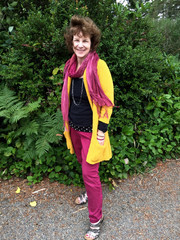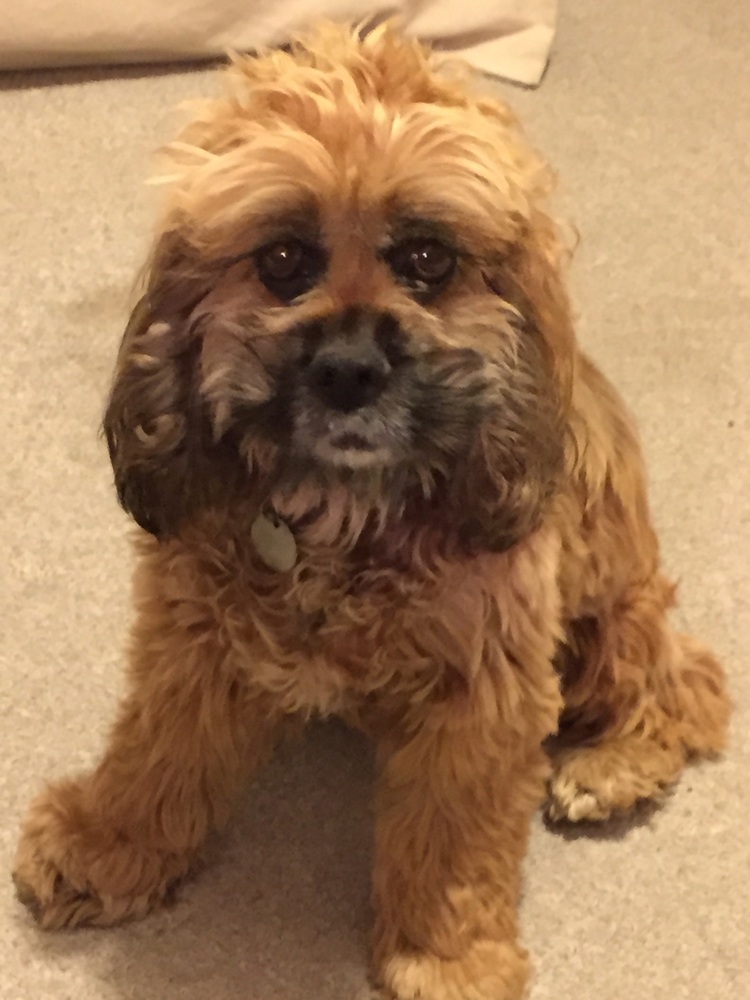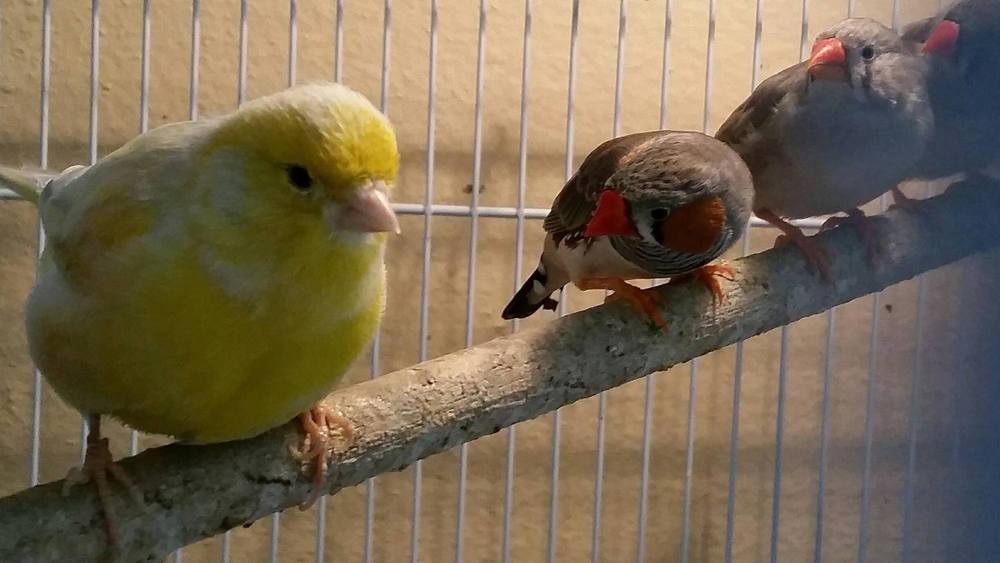When I was a kid, Beatrix Potter was one of my favorite authors, so I jumped at the opportunity to review a new children's book called Beatrix Potter & the Unfortunate Tale of a Borrowed Guinea Pig (Schwartz & Wade, February 2, 2016). As soon as I saw the cover, nostalgic feelings welled up. Illustrator Charlotte Voake captured Potter's watercolor style and the font used for the title was just like old Beatrix Potter books. I cozied up on my couch and was ready to be delighted. Instead, I felt a little, well, off upon completing the book.
While I was expecting the story to be a true biography about a segment of Beatrix Potter's youth, the story is actually historical fiction, which means parts are made up (such as changing her from a 26-year-old adult to a young child, which I'm not sure why that was necessary.) The story focuses on young Beatrix and her love of animals, of which her and her brother had many. She kept a journal that included entries about the unfortunate escapes and deaths of some of her pets. Excerpts are cleverly included within the story text adding a layer of innocent dark humor in Beatrix's own voice to the otherwise charming storytelling voice of author Deborah Hopkinson.
We learn that Potter enjoyed making paintings of her pets (and we all know what later became of that fascination.) One day, Beatrix wants to draw a guinea pig from a live model so she borrows her neighbor's pet. While Beatrix was at a fancy dinner party downstairs...
 ,
,
And, you guessed it, the guinea pig died.
Beatrix gave the neighbor a drawing of the guinea pig as an apology. The parting words by the author: If you choose to lend a pet...to an aspiring artist of your acquaintance and something unfortunate happens, be sure to get a picture. And then keep it. Because you never know. (In the endnotes it says that Beatrix Potter became so famous that a picture she made of a guinea pig sold for lots of money.)
I wondered about the message of the book. Was it death happens? Animals used for models for painters may be sacrificed in the name of art? Or, save artwork done by kids because you never know if they will become famous. Although I know death is a reality of life, would sensitive, animal-loving children think this story was funny or feel unsettled? Would they get the dark humor, or, if like me, feel sorry for the poor animals that died under the Potter children's watch, or lack thereof?
Dear Reader, you must decide.
There were things I loved about this book: the creative structure of the layout was delightful, and the end notes! I'm an end note fanatic so I was thrilled to see photos of Beatrix and her brother, her pet bunny, and her handwriting. I think kids will be happy to learn that Beatrix Potter grew up to be an advocate for preserving traditional farms in England, where rabbits hopefully roam unharmed by humans.
To understand the choices Hopkinson made when writing about her subject - plus other curiosities - I thought it was best to hear from the author herself.

What drew you to the subject of Beatrix Potter?
I have long been fascinated by Beatrix Potter, both as a major influence in children’s literature and a conservationist. My interest was piqued when I read more about her life and her dedication to practicing her craft beginning at a young age. This is something I always talk to students at author visits in schools about – that success in any endeavor often requires long years of practice.
Why did you focus on the animals in her life?
I focused on animals because clearly this was a huge part of Beatrix’s childhood, and often a source of unfortunate disasters!
How did you choose the journal entries for your book?
Beatrix Potter’s journal was written in code and published after her death. I tried to choose the excerpts from her journal that were especially humorous.
The illustrations remind me of Potter’s watercolors. How was the illustrator, Charlotte Voake, chosen?
Charlotte Voake is a renowned British illustrator whom my editor, Anne Schwartz, has long admired and so she asked her to do the art. I’m delighted to also announce that Walker Books, Ms. Voake’s British publisher, will be releasing the book in July, the month in which Beatrix Potter was born 150 years ago.
You based your story on real journal entries, but why did you feel it was necessary to change her age and make up parts?
Although it is based on actual incidents, my book is obviously historical fiction, which children immediately grasp when I show them the cover and read the title. I wanted to include dialogue to tell the story in a more interesting way for young readers, and that required fictionalizing the story and also taking a tongue-in-cheek approach. For the same reason, we took the liberty of making her younger to make the story more interesting to young children.
In this time of sensitivity to protecting animals, how do you think children will react to the pets and wild animals dying?
I believe most kids have very well-developed senses of humor -- and an appreciation for dark humor as well. When I work with students in schools, we look closely at what words and art tell us about a story, and I have found that most of us (young or old) have stories to share of finding a wild bird or bunny and having it die or, conversely, of borrowing something and ruining it. (When I autograph personal copies of Beatrix, I sometimes write, “Be Kind to Animals.” Other times I write, “Make art.”)
Coincidentally, my next two books are about saving animals.
You break what in movies is called the “4th wall” and talk directly to your readers. Was this done to mimic Beatrix Potter’s storytelling technique?
Beatrix Potter’s first book was inspired by a picture letter that she wrote to a young friend. I love playing with the structure of picture books, and so, with the collaboration of the illustrator, editor, and art director, we designed this book as a picture letter. It begins “Dear Reader,” and the PS is the author’s note.
Have you ever been to Hill Top Farm, Potter’s farm (now a museum) in England?
While I have been fortunate to see some of Potter’s artwork in the Victoria and Albert Museum, I haven’t yet been to Hill Top Farm, but it is definitely on my list.
What’s your favorite Beatrix Potter story?
I especially love The Tale of Peter Rabbit, perhaps because there is something so wonderful about seeing how the story developed from Potter’s picture letter (which is reproduced in the note in my book.)
Do you have pets?
We now have two dogs (Rue below), an old cat, a canary and some finches, though once we had many more, including a turtle who lived in our bathtub.


Have any of them made their way into your own stories?
One of my previous dogs, Kona, has been the model for two dogs in my middle grade historical fiction novels. She inspired Shakespeare in Into the Firestorm and Piccadilly in The Great Trouble.
Do you have any unfortunate tales of any pets during your lifetime?
Alas, when my family lived on a half acre in Walla Walla, Washington, our dog somehow got from one part of the yard to my son’s chicken coop, right after he had ordered about two dozen baby chicks. It is a day we will all remember.
What can children learn from the unfortunate deaths of the animals in this story?
Don’t do what Beatrix did!
Thanks again to Deborah Hopkinson for the interview. My opinion is just one of many you can read on this blog tour, so I encourage you to seek out another review. For other stops on the Beatrix Blog Tour please check deborahhopkinson.com. #Beatrix150
Read More:

